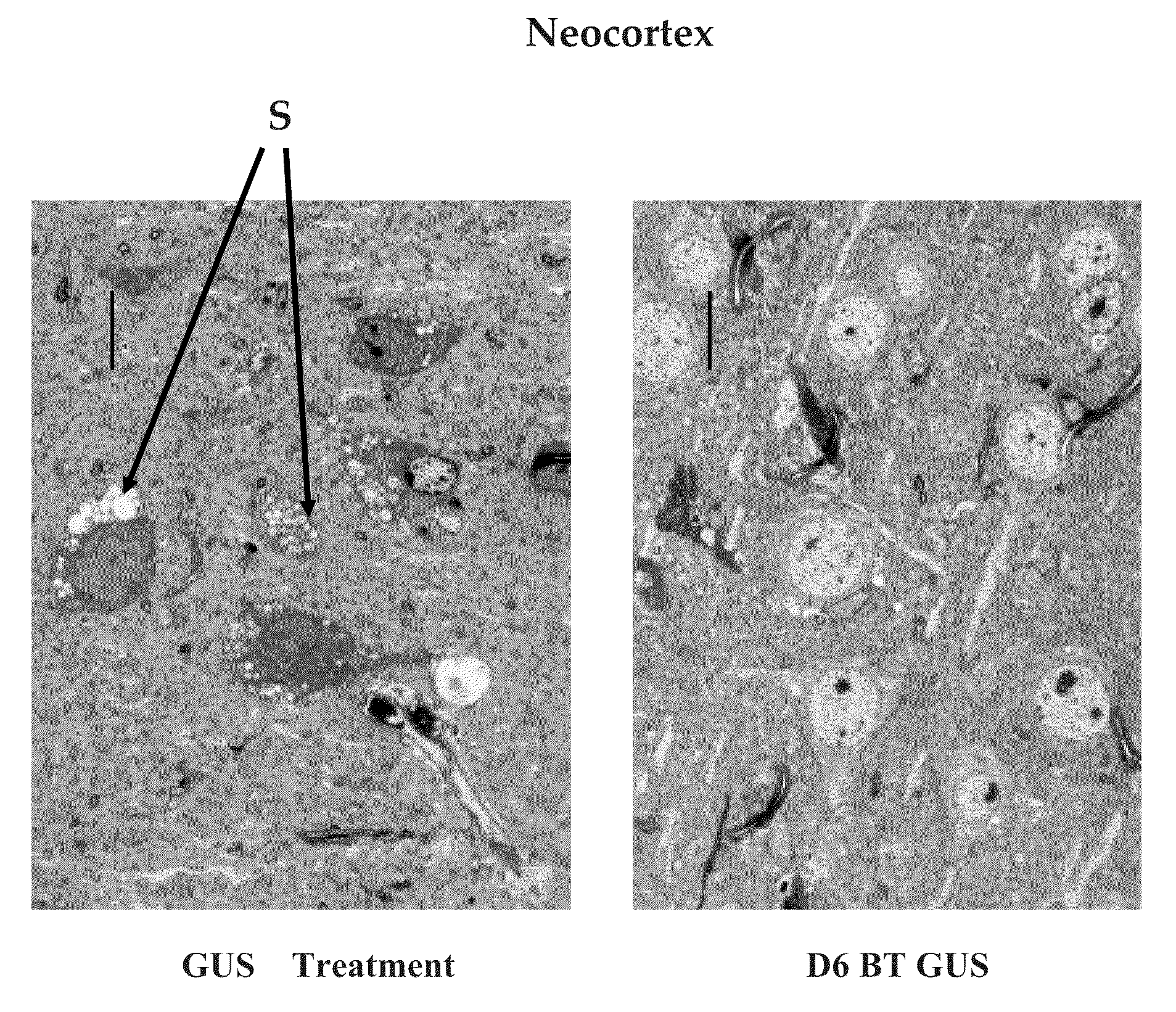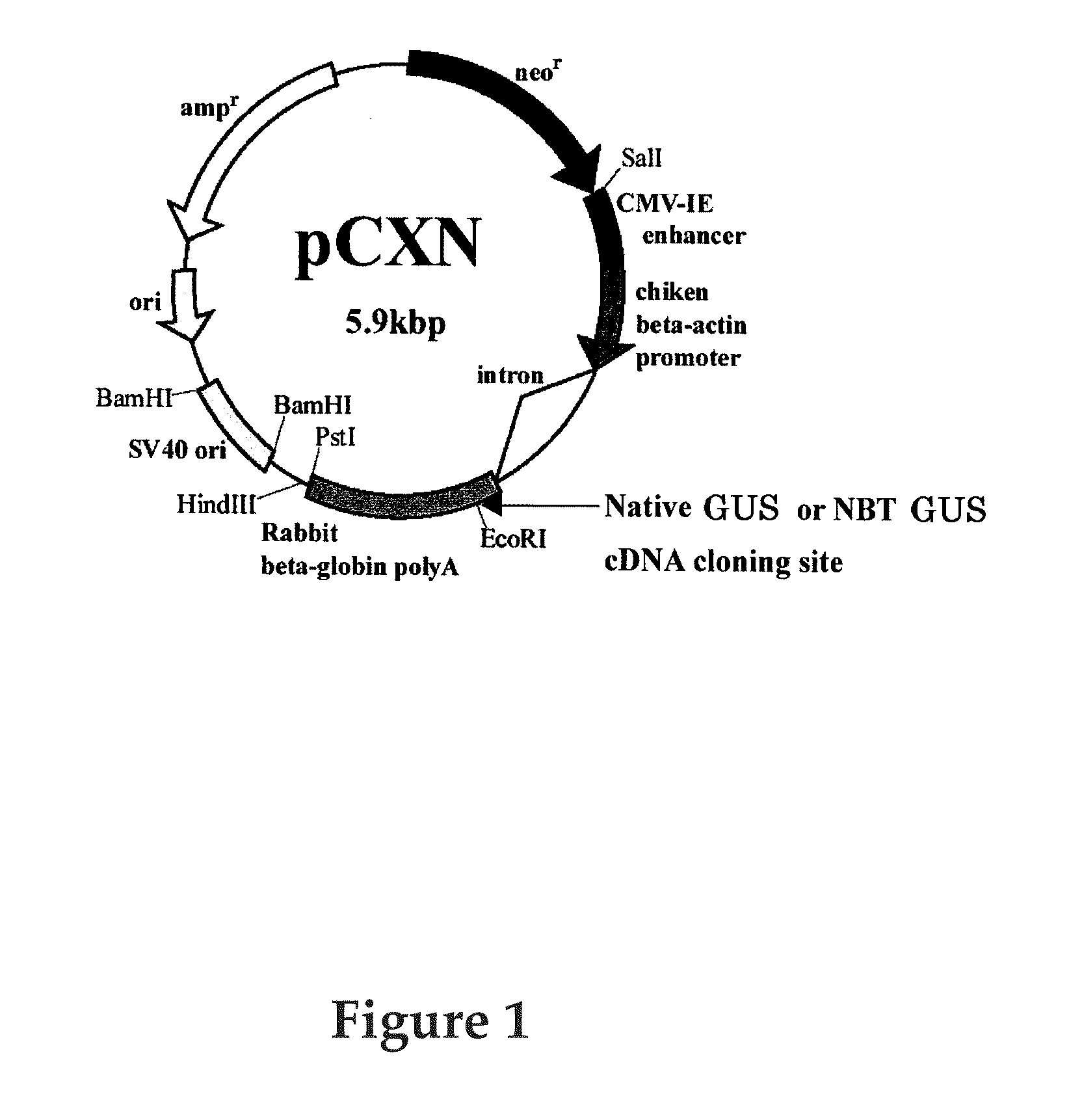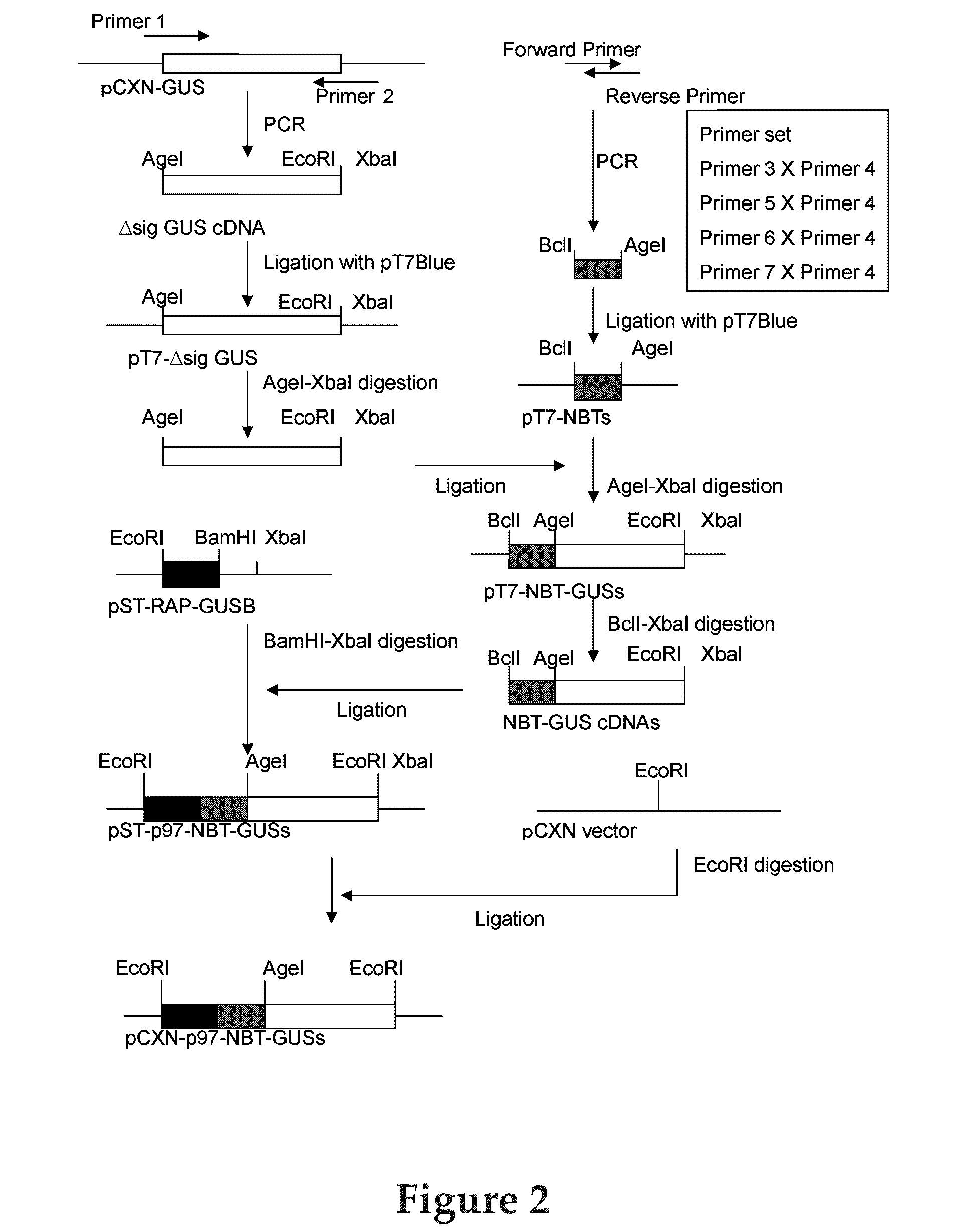Enhancing the effect of therapeutic proteins on the central nervous system
a technology of therapeutic proteins and cns, which is applied in the field of endowing therapeutic protein agents, can solve the problems of unstable pharmaceutical preparations relatively rapid inactivation, and no effective remedy is currently available, so as to increase the therapeutic effect of physiologically active proteins on the central nervous system, increase the targeting and deposition of these enzymes, and increase the stability of physiologically active peptides in vivo
- Summary
- Abstract
- Description
- Claims
- Application Information
AI Technical Summary
Benefits of technology
Problems solved by technology
Method used
Image
Examples
example 1
Method for Construction of Expression Vectors
[0038]Vector pCXN had been constructed in accordance with a literature (7) and was offered to us by Prof. Miyazaki at Osaka University. An expression vector for native human GUS, pCXN-GUS, was constructed by using human GUS cDNA that had been reported by Oshima et al. (8) (Accession No. of GenBank for the Amino acid and cDNA sequence of Human GUS is BC014142.). An expression vector for human GUS to the N-terminus of which is attached (via a linker peptide) a short peptide (N-terminal bone tag: NBT) consisting of acidic amino acids (NBT-GUS), was constructed starting with pCXN-GUS in the following manner. FIGS. 1 and 2 schematically illustrate the process for construction.
[0039]Using pCXN-GUS as a template, PCR was carried out using LA-Taq (Takara) to amplify Δsig GUS cDNA (the sequence, nt 67-1956, left behind after removal of the sequence of nt 1-66 corresponding to a secretion signal, from the ORF region of the sequence set forth as SEQ...
example 2
Stability in the Blood
[0063]Per 1 g of body weight, 1,000 U of native GUS or one of the NBT-GUSs, both purified, were administered to male, 4-month old C57BL mice (3 animals / group) in the tail vein. Samples of venous blood were collected at 2 min, 5 min, 10 min, 20 min, 30 min, 1 hr, 2 hr, 6 hr, 24 hr after the administration, and GUS activity in the serum was measured. The results are shown in FIG. 3. Comparison between the NBT-GUSs-administered groups and the native GUS-administered group reveals that, at 2 min after the administration, the enzyme activity in the blood was 2-fold higher in the NBT-GUSs-administered groups as compared with the native GUS-administered group. While the enzyme activity in the blood at 30 min after the administration was almost disappeared in the native GUS-administered group, the NBT-GUSs-administered groups retained activity levels, which were even higher than the activity level found at 2 min in the native GUS-administered group. Afterwards, the NBT...
example 3
Effects of GUS on Brain Tissue
[0064]To compare the effectiveness of AAA-tagged and untagged GUS at clearing storage from affected tissues in the MPS VII mouse, the inventors used a protocol in which enzyme was given in 12 weekly treatments with 1 mg / kg enzyme. There were notable differences in which the D6-GUS appeared to be more effective in clearing the storage material. The parietal neocortical neurons and glia had less storage in the D6-GUS-treated MPS VII mice. In brain, the AAA-tagged enzyme showed improved clearance of storage from parietal neocortical neurons and glial cells, where as storage showed minimal or no clearance response to untagged enzyme at the same dose. FIG. 4 shows light microscopy of tissues from native GUS and D6-GUS treated MPS VII mice. The cortical neuron, hippocampus, and glia cell sections show a reduction of storage (S) in D6-GUS treated compared to GUS treated mice.
[0065]In these studies, MPS VII / E540Atg mice were used.22 These mice carry a GUS trans...
PUM
| Property | Measurement | Unit |
|---|---|---|
| concentration | aaaaa | aaaaa |
| pH | aaaaa | aaaaa |
| pH | aaaaa | aaaaa |
Abstract
Description
Claims
Application Information
 Login to View More
Login to View More - R&D
- Intellectual Property
- Life Sciences
- Materials
- Tech Scout
- Unparalleled Data Quality
- Higher Quality Content
- 60% Fewer Hallucinations
Browse by: Latest US Patents, China's latest patents, Technical Efficacy Thesaurus, Application Domain, Technology Topic, Popular Technical Reports.
© 2025 PatSnap. All rights reserved.Legal|Privacy policy|Modern Slavery Act Transparency Statement|Sitemap|About US| Contact US: help@patsnap.com



